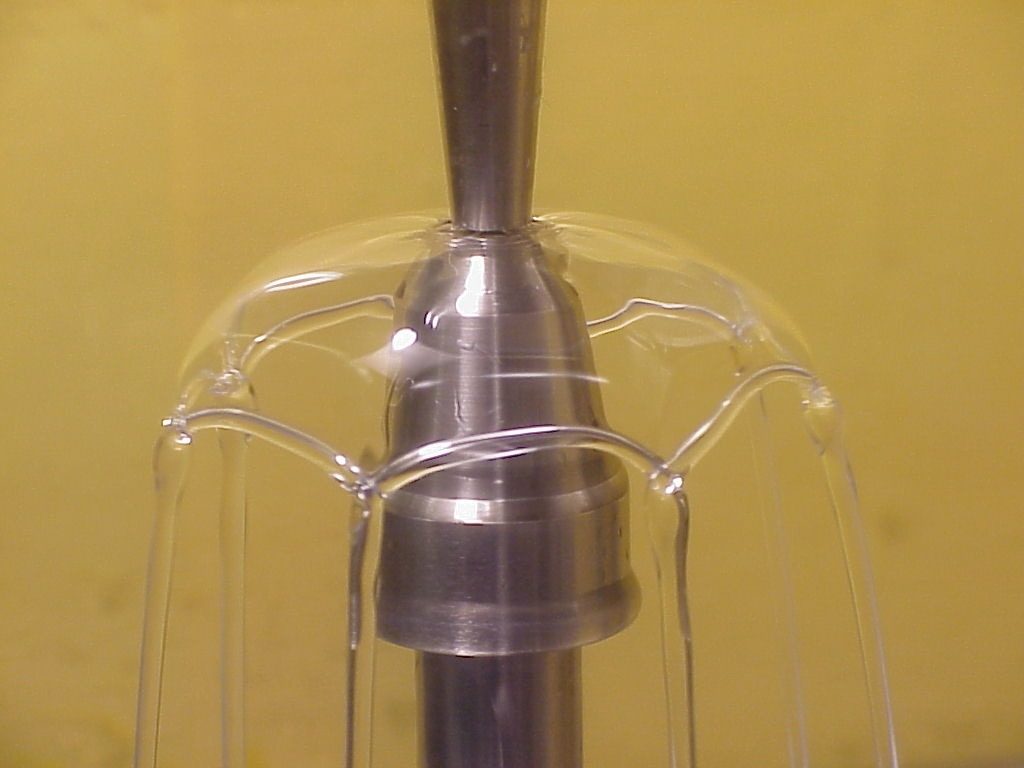When two jets of liquid collide, they form a sheet of fluid. As the speeds of the jets change, the sheet can become unstable, forming a set of liquid ligaments and droplets that look like a fish’s bones. This is shown in the video above. For purposes of orienting yourself, flow in the video is moving right to left and the video has been rotated 90-degrees clockwise (i.e. the two out-of-frame jets forming the flow seen are falling due to gravity). (Video credit: Sungjune Jung, University of Cambridge)
Tag: liquid sheet

Soap Bubbles Bursting
To the human eye, the burst of a soap bubble appears complete and instantaneous, but high-speed video reveals the directionality of the process. Surface tension is responsible for the spherical shape of the bubble, and, when the bubble is pierced, surface tension is broken, causing the soap film that was the bubble to contract like elastic that’s been stretched and released. Droplets of liquid fly out from the edges of the sheet until it atomizes completely.

Colliding Jets
Two jets of sugar syrup collide and interact to form very different patterns. On the left, the two jets have a low flow rate and create a chain-like wake. The jets on the right have a higher flow rate and produce a liquid sheet that breaks down into filaments and droplets. The result is often likened to fish bones. (Photo credit: Rebecca Ing)

Splash Sheets
When a falling liquid jet hits a horizontal impacter, it is deflected into a sheet. The shape of the sheet is dependent upon the velocity of the jet and the viscosity of the fluid. At sufficiently high speeds the sheet will be circular; at lower speeds it may sag into a bell-shape. The circular sheets can also develop an instability that causes them to become polygonal, as shown in the photos above. The fluid then flows out along the sheet, into and along the rim, and then spouts outward in jets at the polygon’s corners. For some conditions, the jets at the corners even form a sort of fluid chain (top photo). (Photo credit: R. Buckingham and J. W. M. Bush; via 14-billion-years-later)




